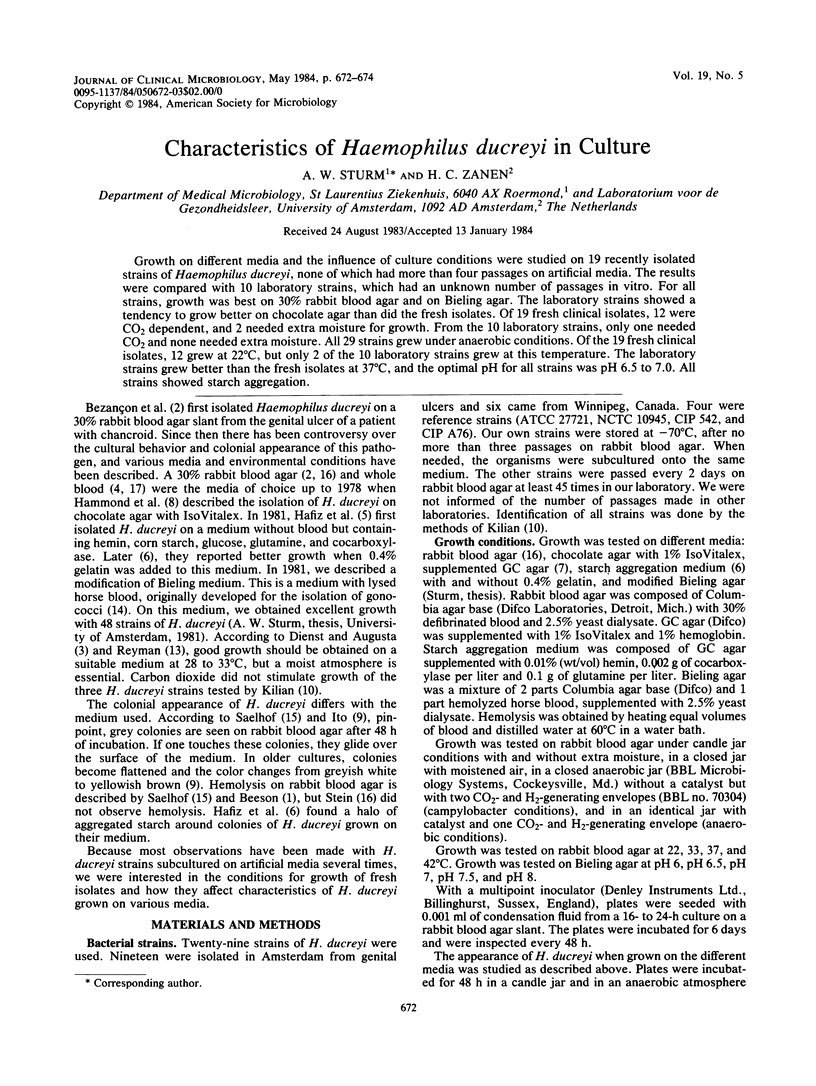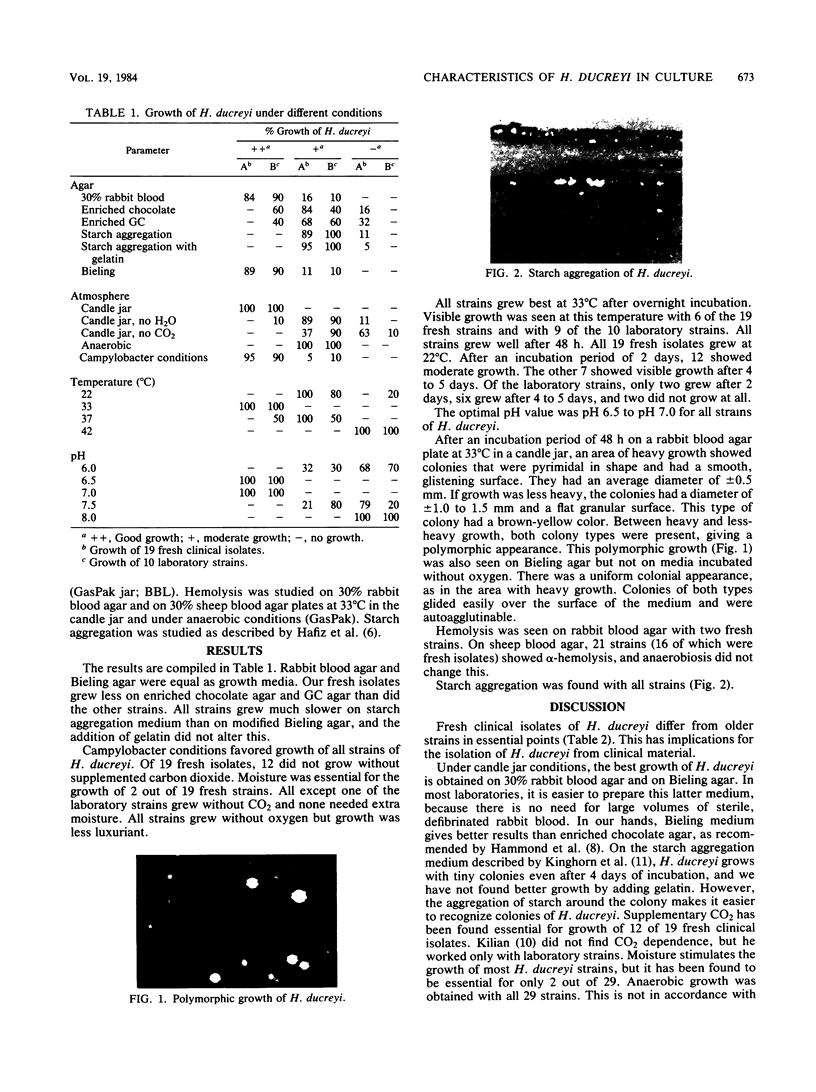Abstract
Growth on different media and the influence of culture conditions were studied on 19 recently isolated strains of Haemophilus ducreyi, none of which had more than four passages on artificial media. The results were compared with 10 laboratory strains, which had an unknown number of passages in vitro. For all strains, growth was best on 30% rabbit blood agar and on Bieling agar. The laboratory strains showed a tendency to grow better on chocolate agar than did the fresh isolates. Of 19 fresh clinical isolates, 12 were CO2 dependent, and 2 needed extra moisture for growth. From the 10 laboratory strains, only one needed CO2 and none needed extra moisture. All 29 strains grew under anaerobic conditions. Of the 19 fresh clinical isolates, 12 grew at 22 degrees C, but only 2 of the 10 laboratory strains grew at this temperature. The laboratory strains grew better than the fresh isolates at 37 degrees C, and the optimal pH for all strains was pH 6.5 to 7.0. All strains showed starch aggregation.
Full text
PDF


Images in this article
Selected References
These references are in PubMed. This may not be the complete list of references from this article.
- Hafiz S., Kinghorn G. R., McEntegart M. G. Chancroid in Sheffield. A report of 22 cases diagnosed by isolating Haemophilus ducreyi in a modified medium. Br J Vener Dis. 1981 Dec;57(6):382–386. doi: 10.1136/sti.57.6.382. [DOI] [PMC free article] [PubMed] [Google Scholar]
- Hafiz S., Kinghorn G. R., McEntegart M. G. Starch aggregation as a presumptive test for Haemophilus ducreyi. Lancet. 1982 Oct 16;2(8303):872–872. doi: 10.1016/s0140-6736(82)90830-3. [DOI] [PubMed] [Google Scholar]
- Hammond G. W., Lian C. J., Wilt J. C., Albritton W. L., Ronald A. R. Determination of the hemin requirement of Haemophilus ducreyi: evaluation of the porphyrin test and media used in the satellite growth test. J Clin Microbiol. 1978 Mar;7(3):243–246. doi: 10.1128/jcm.7.3.243-246.1978. [DOI] [PMC free article] [PubMed] [Google Scholar]
- Hammond G. W., Lian C. J., Wilt J. C., Ronald A. R. Comparison of specimen collection and laboratory techniques for isolation of Haemophilus ducreyi. J Clin Microbiol. 1978 Jan;7(1):39–43. doi: 10.1128/jcm.7.1.39-43.1978. [DOI] [PMC free article] [PubMed] [Google Scholar]
- Kilian M. A taxonomic study of the genus Haemophilus, with the proposal of a new species. J Gen Microbiol. 1976 Mar;93(1):9–62. doi: 10.1099/00221287-93-1-9. [DOI] [PubMed] [Google Scholar]
- Kinghorn G. R., Hafiz S., McEntegart M. G. Modified haemin-containing medium for isolation of Haemophilus ducreyi. Lancet. 1982 Feb 13;1(8268):393–394. doi: 10.1016/s0140-6736(82)91417-9. [DOI] [PubMed] [Google Scholar]
- Oberhofer T. R., Back A. E. Isolation and cultivation of Haemophilus ducreyi. J Clin Microbiol. 1982 Apr;15(4):625–629. doi: 10.1128/jcm.15.4.625-629.1982. [DOI] [PMC free article] [PubMed] [Google Scholar]




